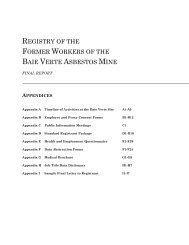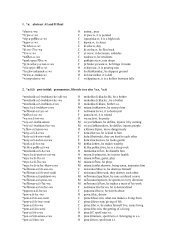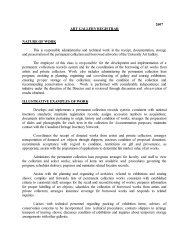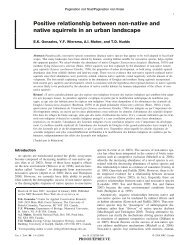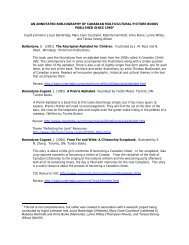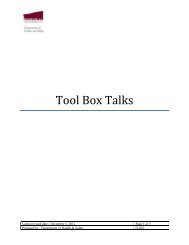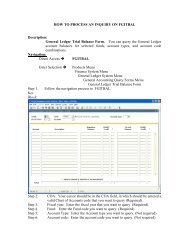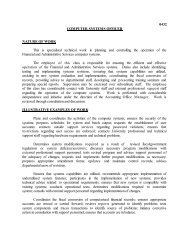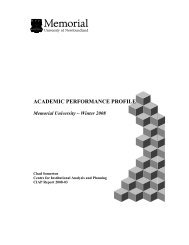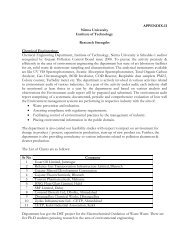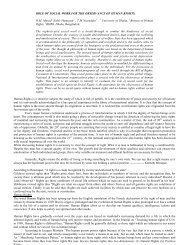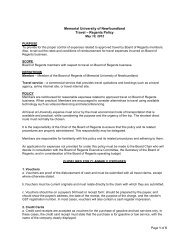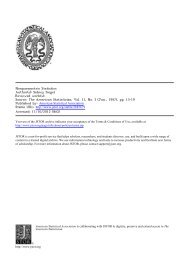You also want an ePaper? Increase the reach of your titles
YUMPU automatically turns print PDFs into web optimized ePapers that Google loves.
114.<br />
Furthe~on 19.7.36, a male ermine was trapped which showed enlargement <strong>of</strong><br />
the testicles (dimensions 7 by 16 mm):<br />
and between 10 and 20 November 1936,<br />
double or paired tracks were observed <strong>of</strong> "courtin~' male and female ermine,<br />
over a distance <strong>of</strong> 1.5 km<br />
(trampling down in some places, crawling on the<br />
belly, and other signs <strong>of</strong> mating behaviour similar to those observed in<br />
March) •<br />
In summary,<br />
these data on the periods <strong>of</strong> mating and birth, suggest<br />
that the breeding season <strong>of</strong> the ermine is very prolonged, and may possibly<br />
include some latent period, and that a false rut or mating occurs in March<br />
and April.<br />
N.D. Grigortev (1938) likewise concluded that there is a<br />
prolonged gestation, and that mating actually occurs during the autumn.<br />
If, however, mating does occur in spring, then the gestation period <strong>of</strong><br />
female ermine must be only about one and one half months.<br />
Observations <strong>of</strong> nests with young were made during the nesting<br />
period.<br />
The sites chosen by the ermine were <strong>of</strong>ten alike in different<br />
habitats (see Table 2).<br />
Marshy ground is no obstacle to nesting for<br />
ermine:<br />
earlier, M.M. Baryshev (1931-33) had twice found broods <strong>of</strong> ermine<br />
in covered nests among purple willow shrub in flood plains.<br />
If the nest<br />
is formed in a burrow, it is made as a circular chamber, having a diameter<br />
<strong>of</strong> about 30 cm.<br />
Apart from the principal burrow, the ermine also have a<br />
number <strong>of</strong> temporary refuges nearby.<br />
Dry leaves usually form the floor <strong>of</strong><br />
the burrow, or wool or skin from prey animals.<br />
Sometimes reed-mace seeds,<br />
tow, or wool from domestic animals is used.<br />
The young are born naked and blind and are about 5 to 5.5 cm long.<br />
Their eyes open in about 10 days, (a) and at the same time, their fur begins<br />
to grow.<br />
By the middle <strong>of</strong> August,<br />
the young males have reached the size <strong>of</strong><br />
an average female,<br />
and by November they are almost full-grown.<br />
The young<br />
ermine leave the nest at the age <strong>of</strong> about two months,<br />
but the family sta~ in<br />
(a) Intensive observations on young born in captivity (M~ller 1970 : 343)<br />
show that the eyes open at 34 days at the earliest, range 34-42 days. - Ed.



